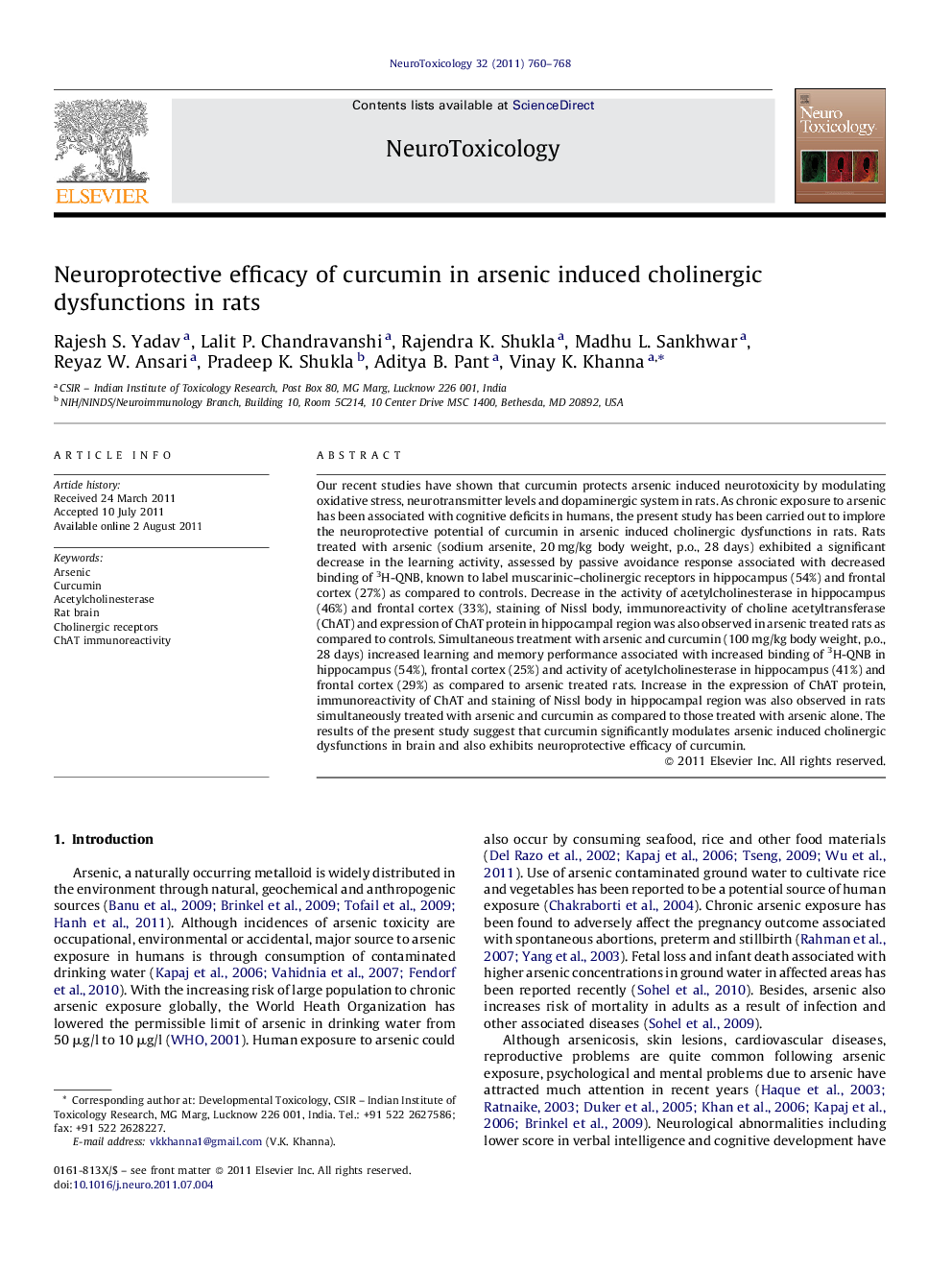| Article ID | Journal | Published Year | Pages | File Type |
|---|---|---|---|---|
| 5855427 | NeuroToxicology | 2011 | 9 Pages |
Our recent studies have shown that curcumin protects arsenic induced neurotoxicity by modulating oxidative stress, neurotransmitter levels and dopaminergic system in rats. As chronic exposure to arsenic has been associated with cognitive deficits in humans, the present study has been carried out to implore the neuroprotective potential of curcumin in arsenic induced cholinergic dysfunctions in rats. Rats treated with arsenic (sodium arsenite, 20Â mg/kg body weight, p.o., 28 days) exhibited a significant decrease in the learning activity, assessed by passive avoidance response associated with decreased binding of 3H-QNB, known to label muscarinic-cholinergic receptors in hippocampus (54%) and frontal cortex (27%) as compared to controls. Decrease in the activity of acetylcholinesterase in hippocampus (46%) and frontal cortex (33%), staining of Nissl body, immunoreactivity of choline acetyltransferase (ChAT) and expression of ChAT protein in hippocampal region was also observed in arsenic treated rats as compared to controls. Simultaneous treatment with arsenic and curcumin (100Â mg/kg body weight, p.o., 28 days) increased learning and memory performance associated with increased binding of 3H-QNB in hippocampus (54%), frontal cortex (25%) and activity of acetylcholinesterase in hippocampus (41%) and frontal cortex (29%) as compared to arsenic treated rats. Increase in the expression of ChAT protein, immunoreactivity of ChAT and staining of Nissl body in hippocampal region was also observed in rats simultaneously treated with arsenic and curcumin as compared to those treated with arsenic alone. The results of the present study suggest that curcumin significantly modulates arsenic induced cholinergic dysfunctions in brain and also exhibits neuroprotective efficacy of curcumin.
⺠Neuroprotective potential of curcumin in arsenic induced cholinergic deficits demonstrated in rats. ⺠Arsenic decreased learning activity associated with decreased binding of cholinergic receptors. ⺠Arsenic exposure also decreased AChE activity, ChAT-ir and staining of Nissl body in hippocampus. ⺠Co-treatment with arsenic and curcumin increased learning activity and cholinergic receptor binding. ⺠Co-treatment increased ChAT immunoreactivity and Nissl body staining in hippocampal region.
